Why Walleye Fishing on Lake Erie is Better Than Ever
Lake Erie is a great place to cast a line for perch and bass, but it is also teeming with more walleye than it has been in decades. Here is why that is happening and how you can be part of it.
June 2024
BY Kristina Smith | Walleye collage by Jessa Hendershot with Walleye Illustration from iStock / George Peters
June 2024
BY Kristina Smith | Walleye collage by Jessa Hendershot with Walleye Illustration from iStock / George Peters
Peg VanVleet’s earliest memories are of fishing on Lake Erie with her parents and grandparents. Most weekends during the spring and summer, they’d drive up to the lake, hop on their boat and head out in search of some of the lake’s prized walleye, perch and smallmouth bass.
After bringing home their haul, her parents, grandparents and their buddies would start cleaning the fish, and her grandmother would fry them up for dinner. Getting out on the water, enjoying being in nature and then cooking and eating the catch of the day was a special ritual that helped shape who VanVleet is today.
“It became a part of me,” she says. “When I was in my late 40s, I decided I wanted to share my love of the lake with people who didn’t have the opportunity to do that. So I took a sea tech marine class, took the test and got my captain’s license.”
For the next 25 years, VanVleet worked as a Lake Erie charter captain. She retired in summer 2023, but she still helps the crew at her former company, Blue Sky Charters, out of Port Clinton. She also continues to organize a fleet of charter captains who take legislators, tourism officials, media members and other guests fishing during the annual Governor’s Fish Ohio Day, during which participants experience firsthand why Lake Erie has long been referred to as the Walleye Capital of the World and is known as an excellent fishery for a variety of species.
During Fish Ohio Day last year, VanVleet was excited that Gov. Mike DeWine and his wife, Fran, brought their 6-year-old grandson, Desi, along on her boat. She spent the day helping Desi fish, and the pair challenged DeWine to see who could catch the most. Desi won with 11 fish — one more than his grandpa caught.
“My most favorite thing is to take young kids and teach them,” says VanVleet, who is known around the lake as Captain Peg. “We’ve had kids who have never fished before and never held a fishing pole in their hand. They are our future, and if we don’t hook them now, we won’t get them hooked.”
Fostering a connection to the lake and its wildlife in people of all ages and raising awareness of the importance of protecting those resources is what drives VanVleet and many of the 954 licensed charter captains from Ohio operating on Lake Erie.
And now is the perfect time to do it. Lake Erie’s walleye fishing is better than ever, thanks to great walleye hatches — including the biggest on record — in recent years, says Travis Hartman, Lake Erie Fisheries program administrator for the Ohio Department of Natural Resources’ Division of Wildlife.
“There’s no doubt these are the good old days,” Hartman says of the fishing. “We’re living in them.”
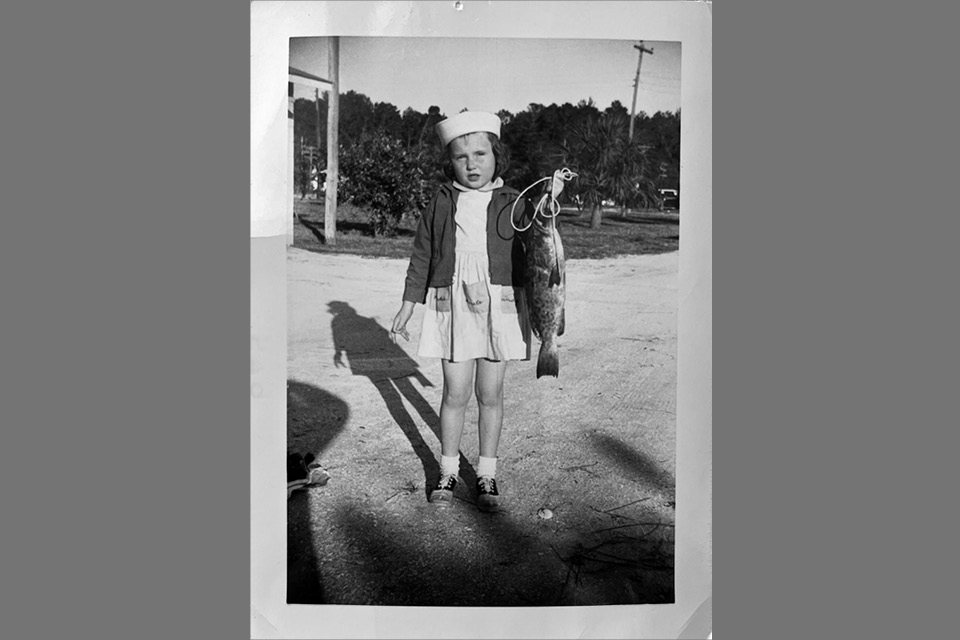
Peg VanVleet, photographed here with a fish as a child, grew up to be a Lake Erie charter boat captain. She says her earliest memories are tied to fishing on Lake Erie. (photo courtesy of Peg VanVleet)
Since the 1980s, Lake Erie has been called the Walleye Capital of the World. Exactly how that name came about isn’t known, but the city of Port Clinton, which also claims the walleye capital moniker, solidified it in 1997 by launching a New Year’s Eve tradition of dropping a giant fiberglass walleye from a crane at midnight.
Years of excellent fishing for walleye, which are big and prized for their tasty fillets, earned the lake that title though. Most walleye caught on Lake Erie are between 18 and 28 inches long.
“There are more of them here than just about anywhere else,” says Tory Gabriel, extension program leader and fisheries educator for Ohio State University’s Ohio Sea Grant and Stone Laboratory. “They’re fun to catch. It’s kind of the thrill of the hunt. They can be difficult to catch sometimes in certain conditions. So, when you do catch one, it’s kind of a rewarding experience.”
Although anglers enjoy targeting other species of fish that are prevalent on the lake, walleye tend to be the prize.
“They want to catch that top predator fish,” VanVleet says. “People are just excited to see that fish come out of the water with all those teeth.”
The prevalence of the catch has gone up and down over the years, depending on the size of spring walleye hatches and environmental conditions of the lake. The 1980s were astounding fishing years because results of the Clean Water Act passed in 1972 had improved the ecosystem, Hartman says.

Peg VanVleet (left) with Ohio Gov. Mike DeWine (right) during a Governor’'s Fish Ohio Day. James A. Rhodes started the Fish Ohio Day tradition in 1979. (photo courtesy of Ohio Department of Natural Resources)
“There was lots of interest in fishing and a recovering walleye population,” he explains. “A lot of things aligned at the right time to really put Lake Erie on the map as the Walleye Capital of World.”
By the 1990s, invasive zebra mussels and other non-native species got into the lake and negatively impacted the food chain. Then in the 2000s, harmful algal blooms, which can produce toxins and have been a problem each summer since, also had a negative impact. The booming catch of the 1980s was long over, although Hartman points out that even in down years, there were still millions of walleye in the lake and good fishing to be had.
A massive, unexpected walleye hatch in 2003 got anglers through the next decade, but the hatches that followed in later years were disappointing. Biologists long believed that hard winters with good ice cover on Lake Erie were a key piece to a good walleye hatch, and the lake rarely freezes for extended periods anymore. Another potential key to good hatches — at least in the 1980s — was high water levels. Levels had been low for many years until the late 2010s. Those higher water levels could be why in 2018, Lake Erie suddenly began producing booming walleye hatches.
Ohio and the Canadian province of Ontario measure the hatches by trawling for fish at sites in Lake Erie’s Western Basin each August. They then take the numbers from these trawl surveys to determine the number of walleye hatched, and they measure them by the number of fish caught per hectare, which is a metric measurement equivalent to about 2.4 acres.
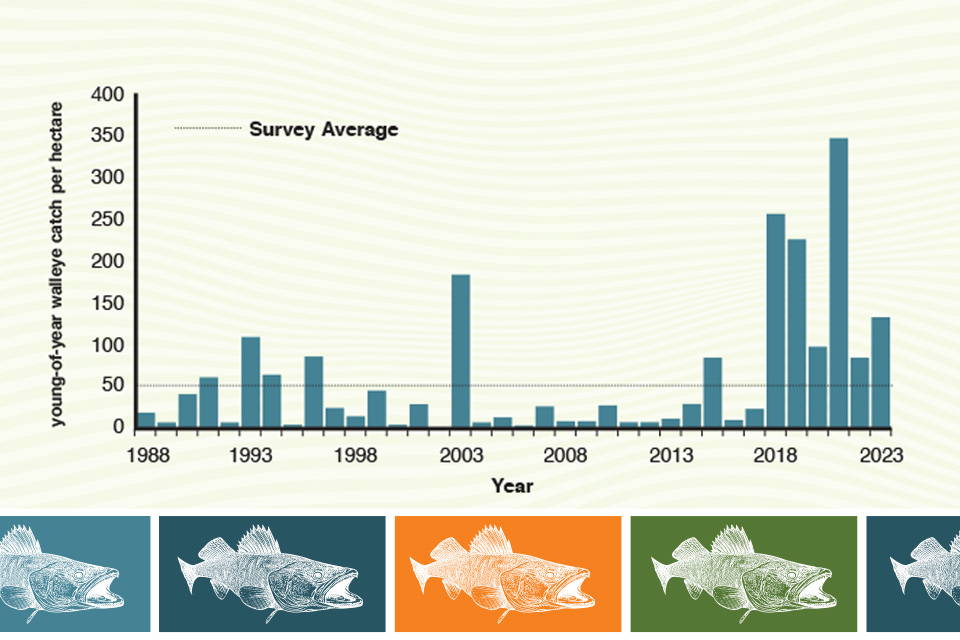
The 2023 Lake Erie Western Basin walleye hatch trawl index was 132 fish per hectacre (a standard measure of catch per area) — well above the average of 56 and the fifth largest in the survey’s 36-year history. Young-of-year means all fish of a species under on year of age. Source: Ohio Division of Wildlife
The 2018 and 2019 hatches were excellent, with 256 and 225 walleye per hectare, respectively, and the 2021 class is the largest on record with 346 fish per hectare, Hartman says. The 2023 class was also above average with 132 fish per hectare.
“After ’03, we thought, ‘We’ll never see that again.’ And in the past six years we’ve gotten three year classes bigger than ’03,” he says. “The last five years have had higher harvest rates than any year in the ’80s.”
Although harmful algal blooms are still a major issue for Lake Erie, they have not kept walleye from thriving, Gabriel points out.
Usually, fish from a great hatch year will become large enough to be legally kept after two years, and they will be catchable in large numbers for the next decade. With three phenomenal hatches in recent years, Hartman says he is confident Lake Erie fishing will be good for the next decade.
“In Lake Erie, there are so many [walleye] right now, so when you get on a school of them, it can be pretty quick catching,” Gabriel adds. “That’s not usual walleye fishing. That’s kind of unique to Lake Erie.”
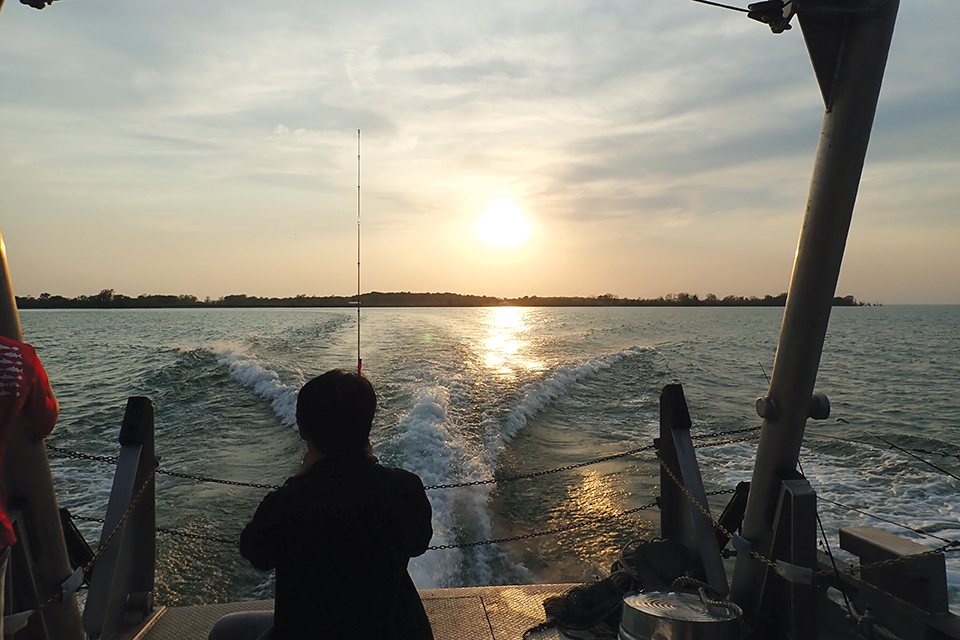
Ohio Sea Grant offers three-day workshops each year that help people interested in fishing Lake Erie get out on the water. (photo courtesy of Ohio Sea Grant)
Walleye might be king, but plenty of anglers come to Lake Erie for other types of fish. Depending on the time of year, the smaller yellow perch are extremely popular. They are another tasty fish and frequently ordered in restaurants around the lake.
Smallmouth bass are probably the third-most targeted fish, VanVleet says. They are a large species that is fun to catch because they put up quite a fight when reeling them in. More anglers are trying to catch largemouth bass (another large species that prefers warmer water) because climate change is warming the lake and creating more near-shore warm spots to find them in. Professional tournaments for walleye and bass take place on the lake each year.
Charter services that specialize in targeting catfish (an aspect of the business that is relatively new on Lake Erie) are popping up on the Sandusky Bay. White bass are also heavily fished during their spring run on the Sandusky River, as well as in certain spots on the lake.
Yellow perch populations in the Western Basin of the lake — around the islands — are doing well, but the Ohio Department of Natural Resources is concerned about declining yellow perch in the Central Basin, which stretches from Sandusky to Conneaut. Smallmouth and largemouth bass populations are stable, and catch rates are good. Catfish populations are strong, and catfishing on the Sandusky Bay is “literally world class,” Hartman says.
“I think that’s why people like our lake so much,” VanVleet says. “Even though you’re targeting walleye, you might catch a big perch, a big catfish, a big sheepshead. Our lake provides that variety of fish.”
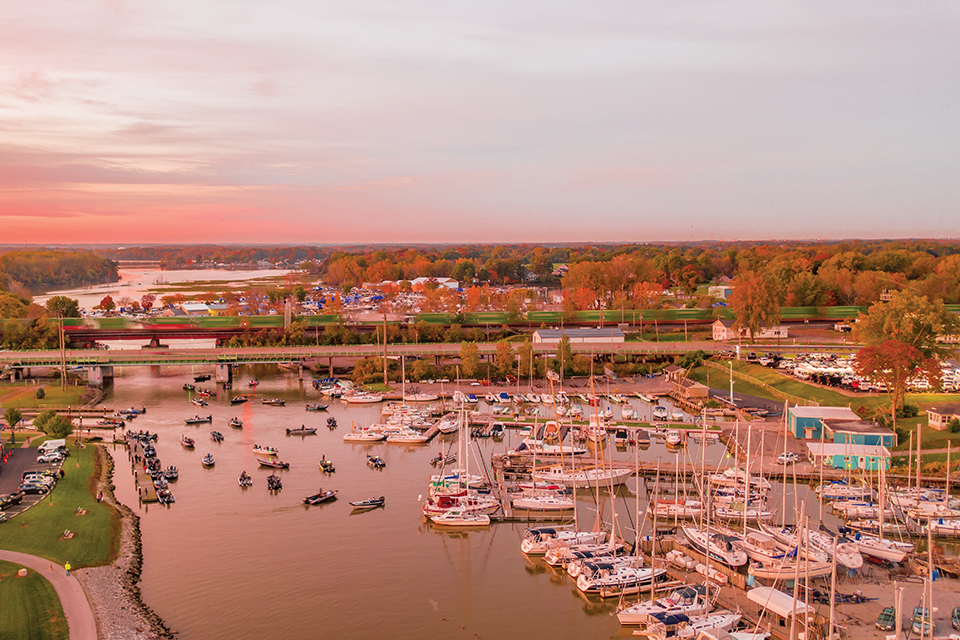
Fishermen take part in a tournament held in the Huron Boat Basin (photo courtesy of Shores & Islands Ohio)
Gabriel connects both beginning and seasoned anglers to Lake Erie’s fish and where to find them each summer during a workshop and a week-long fishing class he teaches at Ohio State University’s Stone Laboratory on Gibraltar Island, just offshore from Put-in-Bay.
During the class, students make their own lures that they use to fish. They learn about fish habitats and how to fish for everything from bluegill to white bass to catfish to walleye. They also learn about Lake Erie ecology, invasive species and their impacts, and how to clean and prepare their fish for eating.
“It’s super fun to create your own lure and catch your fish on it and keep it and eat it,” says Gabriel, who has been teaching the class since 2008. “Obviously when somebody has never caught a fish before or a certain species, that’s really, really cool.”
For Gabriel, working with these upstart anglers and helping them develop a connection to and love for fishing on Lake Erie is very rewarding.
“It’s my favorite thing to do in the job,” he says. “It’s allowing people to interact with the environment in this way. If you’ve never done it before, fishing is just a really good way to have an experience in nature and really get a lot out of it, more than just the fish.”
For those who have never fished Lake Erie, Gabriel, VanVleet and Hartman recommend going on a charter boat with a captain or a head boat, which is a walk-on boat with numerous anglers and crew who can help them or try fishing from shore. VanFleet has fished for redfish and sea trout in the south, walleye in Canada and blue marlin in Hawaii. Yet, she keeps coming back to Lake Erie.
“Lake Erie is by far the best place to go fishing,” she says. “Lake Erie is in my blood.”

Go Fish!
Want to cast a line on Lake Erie? Here are resources that can help you get out on the water.
• Anyone above the age of 16 who wants to fish in public waters needs a current Ohio fishing license that can be obtained online at the Ohio Department of Natural Resources website, ohiodnr.gov.
• Ohio State University’s Stone Laboratory on Gibraltar Island offers a three-day fishing workshop each year that covers the basics of fishing. Stone Lab also offers a week-long fishing course for college credit, although it is open to anyone interested. (To enroll in the fishing class, participants must have completed a one-year high school biology course.) For more information on the workshop or class, visit ohioseagrant.osu.edu.
• There are numerous charter boats and head boats available on Lake Erie. The Ohio Department of Natural Resources’ Division of Wildlife keeps a list of licensed charter captains, and there are various charter associations on Lake Erie, including the Lake Erie Charter Boat Association (lecba.net), Sandusky Charter Boat Association (fishingcharterscba.com) and West Sister Charter Fleet (wscba.com).
Related Articles
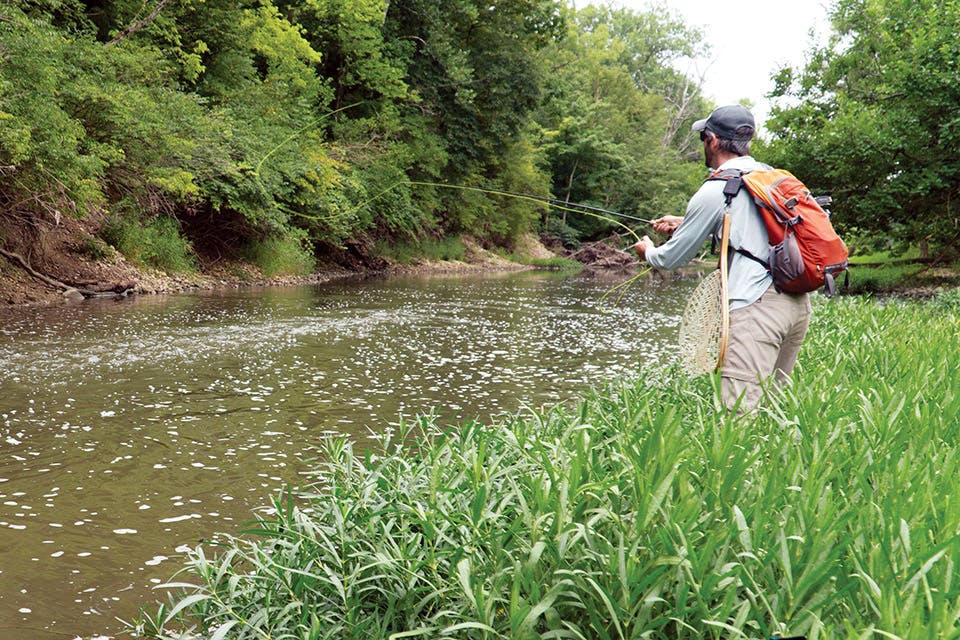
Fly Fishing in Columbus
Our capital city’s rivers and creeks may not seem like a fly-fishing destination, but one local angler has found ample opportunities to cast his line without ever leaving town. READ MORE >>

What I Learned at the Governor’s Fish Ohio Day
The annual event features a morning of fishing that celebrates the bounty of our freshwater natural resource and how it connects people from across the state. READ MORE >>
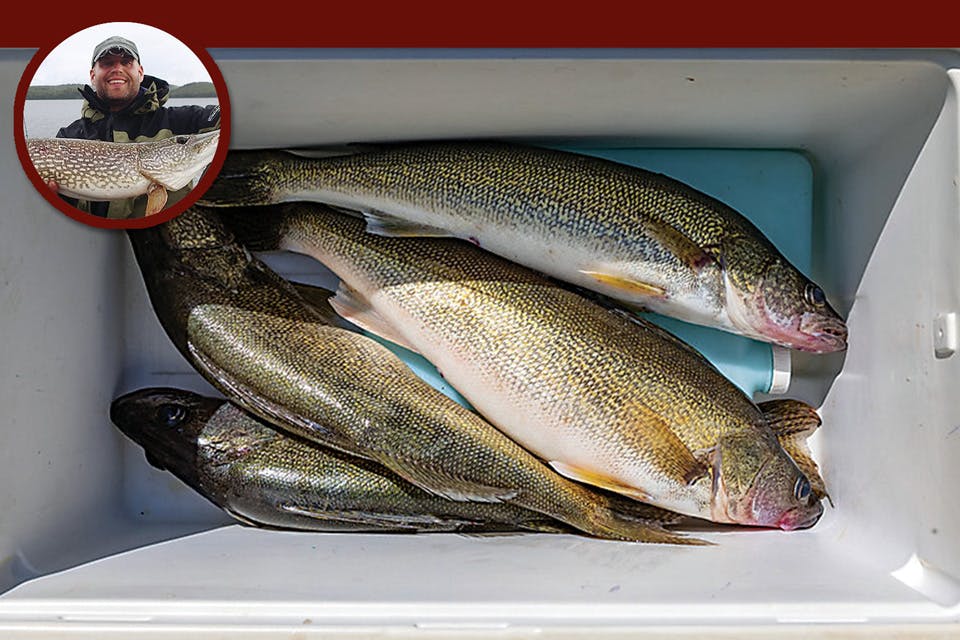
4 Favorite Fishing Spots Along Lake Erie
Fisheries educator Tory Gabriel of Ohio Sea Grant shares his advice on where to cast a line. READ MORE >>



